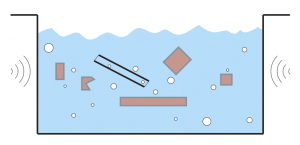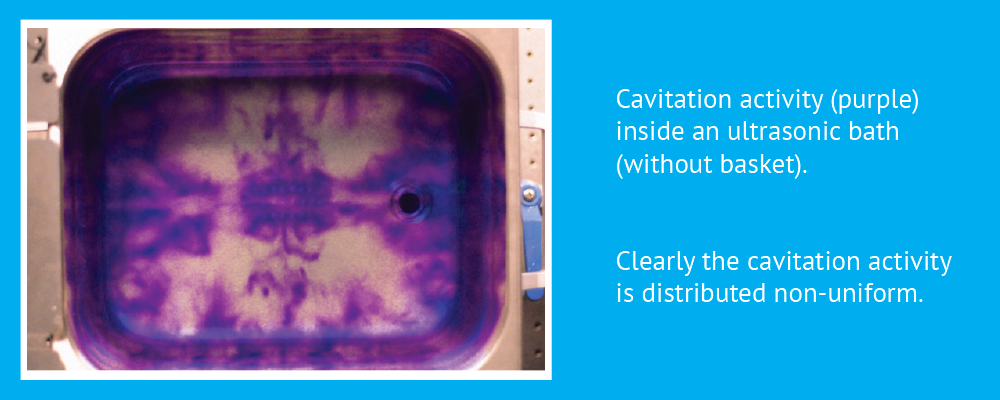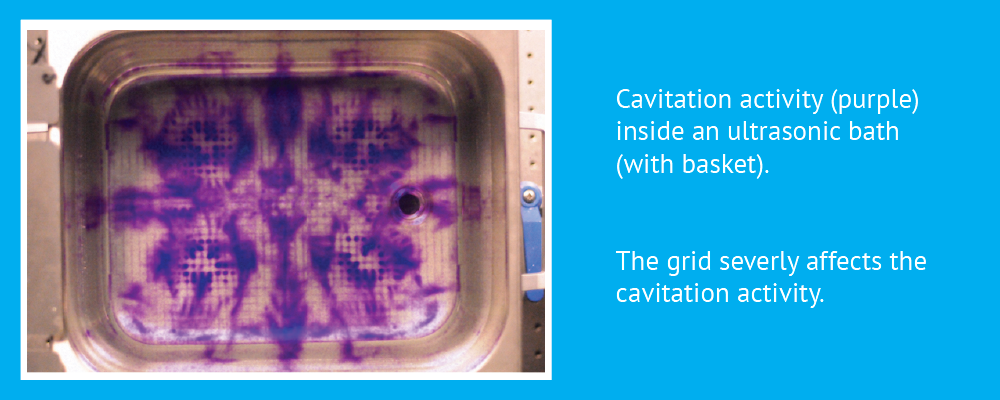The working mechanism behind ultrasonic cleaning is microbubbles.

Microbubbles are generated by the ultrasonic sound waves (frequencies >20 KHz), however it is not the ultrasound that is doing the cleaning, but the collapse of these bubbles (cavitation).
These tiny bubbles collapse with huge velocity on a very small scale and are therefore ideally suited for generating large forces for cleaning.
As a secondary effect, water molecules can be split, which generates highly reactive radicals that can contribute chemically to cleaning.
Metal · Hospitals · Dentists · Jewellers · Opticians · Cleanrooms · Labs · Food processing · Chemical processes · …
Cleaning with microbubbles has been used in ultrasound baths for many decades (see list of industries on the right), however for various present-day industrial processes and small structures, the ultrasound baths are not always effective enough. The main problem is that the microbubbles appear at random and therefore there is a lack of control over the cleaning process.
The images below show the cavitation (and therefore cleaning) activity inside a standard ultrasound bath (visualised using sonochemiluminescence).
The cavitation activity is not uniformly distributed inside this bath. Furthermore, inserting the basket into the bath clearly changes the cavitation activity. Understanding such changes can help to improve the cleaning inside such a bath dramatically, and this understanding is at the heart of our activities.
Find out about our novel cavitation localization technology.





